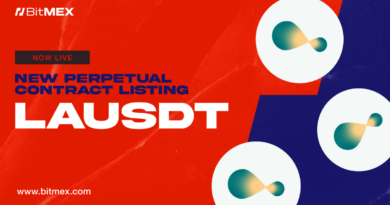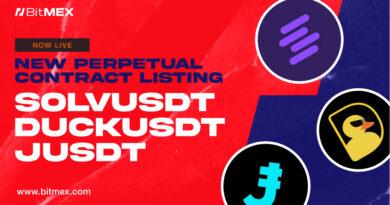What Is Proof-of-Authority (PoA)?
The PoA algorithm flips the script on blockchain consensus. Instead of relying on anonymous miners or massive staking, it puts trusted validators in charge. This article breaks down how it works, where it fits best, and why it’s becoming the go-to model for fast, controlled networks.
What Is Proof-of-Authority (PoA)?
Proof-of-Authority (PoA) is a blockchain consensus mechanism that relies on identity and reputation rather than expensive computing or staking coins. In a PoA network, only approved validators (also called authorities) can create new blocks and verify transactions. These validators are known, trusted entities whose real identities have been verified by the network.
This design solves a key piece of the blockchain trilemma: scalability. PoA networks can run fast and cheap because they skip the slow, resource-heavy consensus used in public blockchains. But it comes at the cost of decentralization.
PoA was introduced as an efficient alternative for private or permissioned blockchains and the term was coined in 2017 by Ethereum co-founder Gavin Wood.

Proof-of-Authority: fast and trusted consensus for private chains.
How PoA Differs from PoW and PoS
PoA works differently from the more common Proof-of-Work (PoW) and Proof-of-Stake (PoS) consensus algorithms.
- Proof-of-Work (PoW): used by Bitcoin (and Ethereum pre-2022), a PoW consensus mechanism has miners compete to solve math puzzles and add blocks. This makes it very secure and decentralized, but slow and energy-intensive because it requires massive computing power.
- Proof-of-Stake (PoS): used by modern networks like Ethereum and Cardano, PoS selects validators based on how many coins they lock up.
- Proof-of-Authority (PoA): uses a small number of pre-selected validators who stake their identity and reputation instead of hardware or digital assets. This model achieves high transaction speeds and low resource usage.
Read also: PoW vs. PoS.

Compare how the top blockchain consensus mechanisms stack up on speed, decentralization, energy use, and validator structure.
How Proof-of-Authority Works
In a PoA consensus mechanism, a fixed group of validating nodes is responsible for keeping the blockchain secure. These validators are approved in advance and must meet strict criteria—usually including identity verification.
Here’s how the Proof-of-Authority algorithm functions:
Validating transactions
Validators confirm whether submitted data qualifies as valid transactions under the network’s rules. Because they’re pre-approved, this step happens quickly and without competition.
Block production
Validators take turns creating blocks. Typically, PoA networks use a round-robin or fixed schedule, so each authority node creates blocks in sequence rather than all at once. Only one validator signs each block, avoiding overlap or conflict.
Reaching consensus
Other validators quickly approve the block. There’s no need for majority votes—authority consensus relies on mutual trust among validators. Once confirmed, the block is added, and the next node takes over. This setup enables fast and predictable block times.
Automation and uptime
Everything is automated by the network. Validators must keep their node running and secure. Downtime or compromise can break the schedule and reduce network performance.
Incentives to behave
PoA relies on reputational risk. Validators are few and publicly known. Cheating—like signing bad transactions—can get them removed and damage their reputation. In PoA, reputation replaces the energy cost of PoW or the financial stake of PoS.
In short, PoA trades decentralization for efficiency. A known group of validators produces blocks in an orderly, cooperative way—making it one of the fastest consensus systems available.
Key Benefits of PoA
Proof-of-Authority offers clear advantages, especially for private blockchain networks that prioritize speed and control:
- High Speed
PoA enables rapid block creation. With only a few authorized entities, the network achieves high transactions per second (TPS). This is ideal for applications that require quick confirmation.
- Energy Efficiency
The PoA transaction process skips mining and large-scale computation. It consumes far less energy and is more cost-effective than Proof-of-Work systems.
- Scalability
PoA is a scalable and efficient alternative to other consensus models. The system can handle growing user demand without overwhelming the validator set.
- Low Transaction Costs
With no mining rewards and non-consecutive block approval, block production stays cheap and fast. This keeps fees low, which is ideal for enterprise and high-volume use.
- Validator Accountability
Validators operate under real identities, increasing trust. If issues arise, it’s clear who is responsible. This visibility also helps streamline governance and upgrades.
Limitations and Criticisms
Despite its strengths, PoA comes with notable drawbacks:
- Centralization of Power
Control rests with a small group of validators. This concentration makes it less resistant to censorship or collusion compared to distributed consensus models like in Bitcoin.
- Trust Requirement
Users must trust a central authority to act honestly. If a validator is compromised or turns malicious, they could harm the entire network. Unlike Proof-of-Stake consensus algorithms, where security is tied to financial risk, PoA depends on personal integrity.
- Censorship and Immutability Concerns
With fewer validators, it’s easier to filter or revert transactions. External pressure or internal agreement could lead to censorship—undermining the network’s integrity and challenging the idea of immutability.
- Validator Targeting
Known identities create risk. Validators can be singled out for bribes, coercion, or attacks. By contrast, anonymous actors in PoS networks are harder to target individually.
- Perception and Incentives
Some see PoA as lacking strong incentives. Validators might not be properly motivated if they’re unpaid or acting out of goodwill. Also, many in the crypto community view PoA as less decentralized—potentially limiting adoption in open ecosystems.
In short, PoA performs well in trusted environments but may not meet the decentralization standards expected in public blockchain projects.

A quick look at the strengths and weaknesses of the PoA consensus mechanism.
Proof-of-Authority Consensus Requirements
Not just anyone can become a validator in a PoA network. Because the consensus method relies heavily on trust, validators must meet strict requirements. These may vary by project, but most PoA systems require that potential validators do the following:
Verify Their Identity
Validators must undergo full identity checks and use the same identity across registration, on-chain verification, and public records. Anonymity isn’t allowed—validators are known to the community and often to regulators.
Demonstrate a Good Reputation
Candidates must have a clean record and a history of trustworthiness and integrity. This reputation mechanism discourages dishonesty—validators must protect their standing in their professional field.
Commit Resources and Expertise
Validators often invest money, time, and technical skill into the project. They stake their reputation—and sometimes funds—to align with the network’s success. Some systems also require holding or bonding tokens to stay eligible.
Maintain a Reliable Node
Validators must run a secure, always-online node with enough hardware and bandwidth to handle the load. Downtime or breaches may lead to disqualification.
Meeting these conditions is just the start. Some networks elect validators through governance or internal votes; others appoint them via centralized oversight. But all PoA systems ensure validators are vetted, known, and committed to maintaining network reliability.
Real-World Applications and Use Cases
Not every blockchain needs to be fully open to the world. In many real-world scenarios, what matters most isn’t decentralization—it’s trust, speed, and accountability. That’s where the Proof-of-Authority model fits in.
When you already know who’s participating, you don’t need thousands of anonymous nodes to agree. You need a system that moves fast, runs efficiently, and ensures only verified players have control. PoA does exactly that—and here’s how it plays out in practice:
Private and Consortium Blockchains
Companies and governments often need a secure shared ledger—but only among known participants. In private or consortium blockchains, having a fixed set of trusted validators makes sense. Microsoft’s Azure Blockchain once offered a PoA framework that let clients quickly spin up private ledgers. In industries like finance or healthcare, this setup ensures each member runs a node under an agreed trust framework—meeting regulatory needs while maintaining control.
Supply Chain Management
Tracking goods requires accuracy, speed, and trust. With so many stakeholders—from manufacturers to retailers—data needs to flow securely. VeChain, a leading authority example, uses PoA to give only verified partners the ability to update the blockchain. This keeps records clean and tamper-proof—ideal for proving product origin, quality, or handling history.
Regulated Environments
Some sectors must prove who’s behind each transaction. That’s why PoA shines in regulated industries like banking, energy, and government records. Take Energy Web Chain, where validators are well-known energy companies coordinating renewable energy markets. The blockchain is open to users, but validator rights are tightly permissioned—ensuring transparency and legal compliance.
Testing and Public Networks
Even public networks use PoA—just not always in production. Ethereum’s Kovan and Rinkeby testnets were built on PoA, with trusted community members running the validating nodes. Developers relied on these networks to test smart contracts without the risks of live deployment. No mining. No forks. Just a stable, predictable sandbox.
In short, the Proof-of-Authority model thrives where identity matters and trust is baked in. It’s not trying to replace Bitcoin. It’s solving problems for businesses, consortiums, and developers who don’t need full decentralization—just a blockchain that works fast, clean, and is under control.
Popular Blockchains Using PoA
We’ve seen where PoA makes sense—now let’s look at who’s using it. These networks show how the Proof-of-Authority model plays out in real life, powering everything from supply chains to fast-moving DeFi platforms.
VeChain (VET)
VeChain is a public blockchain tailored for enterprise use. It relies on 101 Authority Masternodes—vetted organizations with disclosed identities and a deposit of VET—to validate transactions. This setup gives VeChain high speed, low cost, and trust-based governance. It’s not just theory either: Walmart China and BMW use VeChain to track goods in their supply chains, proving how a permissioned yet public PoA network can scale in the real world.
xDai Chain (Gnosis Chain)
xDai started as a PoA-based sidechain to the Ethereum network, built for cheap and stable transactions using the Dai stablecoin. Validators were trusted community members, which kept fees low and block times short (around 5 seconds). Though xDai later evolved into Gnosis Chain with added staking, its original PoA roots showed how small-scale, trusted validators could deliver fast, practical results—perfect for microtransactions and user-friendly payments.
POA Network
One of the earliest true PoA implementations, POA Network, launched in 2017 as a sidechain to Ethereum. Validators had to be licensed notaries in the U.S.—a creative move that brought legal identity into blockchain consensus. While not a major player today, POA Network pioneered cross-chain bridges and helped inspire other PoA projects like xDai. It proved that known, verified validators could run a blockchain quickly, cheaply, and legally.
Binance Smart Chain (BNB Chain)
BSC took PoA and gave it a twist: Proof-of-Staked Authority (PoSA). Validators are approved through governance and must stake BNB, Binance’s native token. Only 21 validators produce blocks at any time, keeping block times near 3 seconds. Critics call it centralized, but the speed and cost-efficiency helped BSC explode in 2021, especially for DeFi apps. It’s a strong example of how PoA-style consensus can scale a public blockchain—even with trade-offs.
Cronos Chain (CRO)
Built by Crypto.com, Cronos runs on a PoA system with 20–30 hand-picked validators. Like BSC, it blends public access with validator permissioning. Anyone can build and use the network, but only approved nodes (often Crypto.com partners) can validate. This keeps the network fast and cheap—great for NFTs, DeFi, and attracting developers within the Crypto.com ecosystem. Cronos shows how PoA can power a consumer-facing chain while still maintaining some central oversight.
Each of these projects applies PoA differently—some leaning toward open networks, others toward controlled environments. But they all prove one thing: when speed and trust matter more than full decentralization, PoA delivers.
The Future of Proof-of-Authority
Proof-of-Authority may not power the most talked-about blockchains, but it has a clear role in the ecosystem. As blockchain adoption grows in the enterprise, government, and other regulated sectors, PoA will likely remain the go-to model where trust, identity, and compliance matter more than decentralization.
PoA isn’t static, either. Networks like VeChain have already upgraded to PoA 3.0, adding Byzantine Fault tolerance for stronger security and resilience. Others, like Binance Smart Chain, blend PoA with staking and community governance, pushing toward more openness without losing speed.
Looking ahead, we’ll see PoA evolve through better validator standards, hardware security, and stronger cross-chain interoperability. It may never be the consensus mechanism for open, public chains—but for permissioned networks that need fast, verifiable consensus, PoA isn’t going anywhere. It’s efficient, adaptable, and built for trust.
Final Words
Proof-of-Authority is all about speed, trust, and control. It trades full decentralization for performance by letting a small group of known validators run the network. This makes it ideal for private networks, enterprise use, or any blockchain where identity matters more than permissionless access.
PoA isn’t for every case—but where compliance, reliability, and efficiency are top priorities, it fits. From supply chains to testnets, it’s a practical choice.
Want to try it out? Explore a VeChain wallet or test an Ethereum PoA network. Seeing it in action is the best way to understand how trusted consensus works in the real world.
FAQ
Is PoA more secure than Proof-of-Stake or Proof-of-Work?
It depends. PoA is secure when validators are trustworthy—it avoids 51% attacks and risks of market manipulation. But it’s weaker if any validator goes rogue. PoW and PoS rely on large, decentralized groups; PoA relies on a few known actors. In private networks, that trade-off makes sense.
How are validators selected and verified in a PoA network?
They must meet strict criteria—usually identity checks, a clean track record, and technical capability. Some are chosen by governance, others by a central authority. Transparency and vetting are key.
Can PoA networks be decentralised?
Not in the traditional sense. PoA reduces decentralization by design. When looking at speed, cost, and trust, any solid authority consensus comparison shows PoA excels in permissioned environments, but lags in decentralization. That said, networks can include community voting or hybrid models to balance control and openness.
How does PoA affect transaction costs and network fees?
PoA networks are cheap to run. With no mining and minimal overhead, fees stay low—even at high throughput. That’s why PoA is often used in systems that need fast, affordable transactions.
Disclaimer: Please note that the contents of this article are not financial or investing advice. The information provided in this article is the author’s opinion only and should not be considered as offering trading or investing recommendations. We do not make any warranties about the completeness, reliability and accuracy of this information. The cryptocurrency market suffers from high volatility and occasional arbitrary movements. Any investor, trader, or regular crypto users should research multiple viewpoints and be familiar with all local regulations before committing to an investment.
The post What Is Proof-of-Authority (PoA)? appeared first on Cryptocurrency News & Trading Tips – Crypto Blog by Changelly.
Cryptocurrency News & Trading Tips – Crypto Blog by Changelly


















